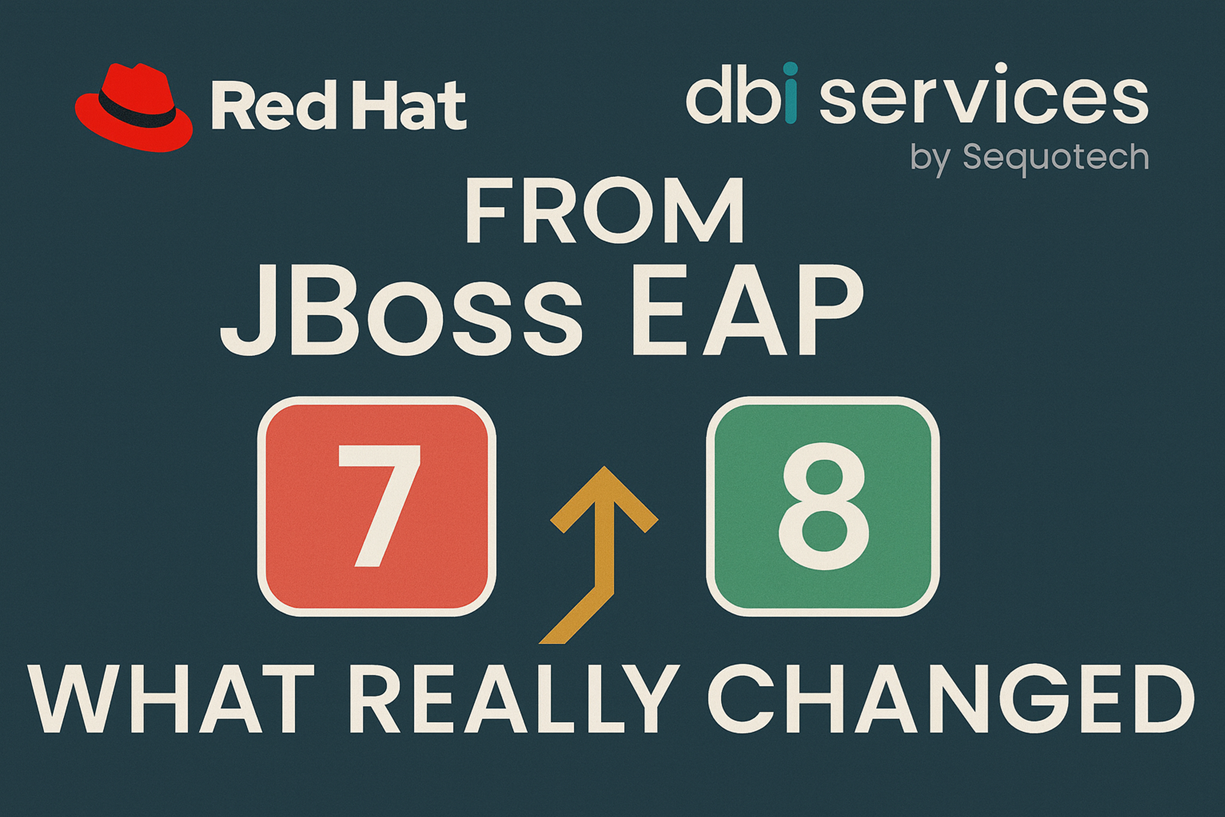The arrival of JBoss EAP 8 marks a significant milestone in the evolution of Red Hat’s Enterprise Application Server. For many organizations still running on JBoss EAP 7.x, the upgrade brings not only new features but also strategic changes aligned with the modernization of the Java ecosystem.
Let’s explore what really changed and what you need to know before moving forward.

A Shift Toward Jakarta EE
The most visible and impactful change in JBoss EAP 8 is the transition from Java EE to Jakarta EE.
- Namespace migration: All javax.* packages are now replaced by jakarta.*.
- This means that even if your application compiles fine on EAP 7, it won’t deploy on EAP 8 without updating imports and dependencies.
- While this migration can sound painful, it’s a necessary step to stay compatible with the modern Java ecosystem and future versions of Jakarta EE.
We can count on the Red Hat’s EAP Migration Toolkit to automatically detect and fix most of the package name changes.
New Java and Platform Support
JBoss EAP 8 officially supports Java 17 and later.
This brings performance, security, and syntax improvements, while dropping support for older Java versions (like Java 8 in many cases).
Other platform updates include:
- Updated Undertow web server version for improved HTTP/2 and security.
- Enhanced datasource and driver management via the CLI and management console.
- Simplified configuration through YAML and CLI scripts, helping automate deployments and tuning.
Updated Subsystems and Architecture Improvements
EAP 8 brings a more modular, streamlined architecture:
- Legacy subsystems deprecated (e.g., older messaging or logging frameworks).
- MicroProfile updates: More APIs for observability, configuration, and fault tolerance.
- Improved clustering and domain mode management, faster startup and better node synchronization.
For administrators, these changes mean fewer manual tweaks and more consistent runtime behavior across environments.
Ready for the Cloud (for Real 😉 )
Red Hat has made significant investments to make EAP 8 cloud-native:
- Better support for OpenShift and Kubernetes with optimized container images.
- Smaller footprint and faster startup thanks to tuned modules and lazy loading.
- Compatibility with Red Hat build of Quarkus for microservice migration paths.
In other words, JBoss EAP 8 is no longer just a traditional application server, it’s a hybrid platform that bridges the gap between legacy Java EE workloads and modern cloud architectures.
Security and Compliance Enhancements
Security was a major focus in JBoss EAP 8:
- Integrated Elytron 2 for modern authentication and authorization.
- Stronger TLS configurations by default.
- Simplified credential store management (replacing legacy vault mechanisms).
Administrators will appreciate the more centralized, policy-driven security model.
My Experience & Recommendations
After long time working with both JBoss EAP 7 and JBoss EAP 8, I can say the migration is more about preparation than complexity.
The most common pitfalls I’ve seen include:
- Forgetting the Jakarta namespace migration.
- Using old JDBC drivers or libraries no longer supported.
- Missing dependencies when running in containerized environments.
Our best practice is always to:
- Test the migration in a clean environment.
- Use automation (Ansible or CI/CD pipelines) for consistent builds.
- Validate performance, logging, and metrics integration (especially with Zabbix or Elastic).
Once properly prepared, JBoss EAP 8 runs smoother, faster, and integrates much better with modern infrastructure.
Conclusion
JBoss EAP 8 isn’t just an upgrade, it’s a modernization step.
It pushes Java EE into the Jakarta EE era, embraces cloud-native deployments, and simplifies operations for enterprises.
While the migration from EAP 7 requires careful planning, the long-term benefits in performance, maintainability, and compliance make it well worth the effort.
If you’re planning a JBoss migration, feel free to reach out for guidance or a technical exchange.
Have a look at our JBoss EAP blogs for more insights.
Happy to share,
David
![Thumbnail [60x60]](https://www.dbi-services.com/blog/wp-content/uploads/2022/09/DDI_web-min-scaled.jpg)
![Thumbnail [90x90]](https://www.dbi-services.com/blog/wp-content/uploads/2025/05/JDE_Web-1-scaled.jpg)